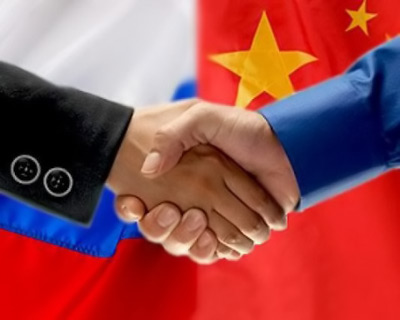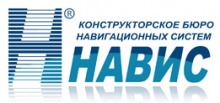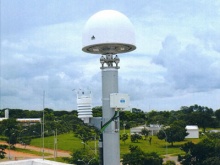Navigation services markets of China and Russia are highly promising.
13 October 2014

Questions of journal "The GLONASS Herald" meets Mr. Pang Chunlin, Secretary-General of China's Telematics Industry Application Alliance (TIAA).
1. How do you assess the development prospects of Chinese and Russian telematics markets?
-Mr. Pang: I believe concept of telematics is quite comprehensive that includes not only the information in the car, but also the V2V/V2I/V2P communications with the car, it is the foundation of ADAS and autonomous, as well as the base of intelligent applications of ITS application.
In China, 20+ million cars are sold to the market annually, the cost of electronic devices in the single car has been increased from 10% to 30%, and 4+ million commercial vehicles have been connected as a tangible supervision measure requested by the government.
I believe the similar trend is emerging in Russia as well as it is in China market. TIAA is actively pushing the cooperation for the member companies between China and Russia together with our partner- GLONASS Union.
2. In what areas the cooperation of Chinese and Russian navigation and information services and telematics is expected?
-Mr. Pang: Under the framework of regular Prime Minister meeting between China and Russia, TIAA and GLONASS Union have signed a mutual declaration document in Dalian, China, on August 1 2014.
According to the document, the cooperation between two parties major includes:
(1) Chipset & algorithm, in-vehicle device hardware based on BDS/GLONASS dual mode, considering the reasonable functions and cost in the design, development of these products.
(2) The adoption of BDS/GLONASS dual mode in-vehicle devices in the trans-border vehicles, and building the service platform for these vehicles in navigation service, customs declaration, immigration Inspection and commercial inspection.
(3) Promote the cooperation in navigation service and emergency response system, as well as V2V/V2I and electronic identification.
(4) Cooperation in standardization, a term of reference will be published and regular updated, based on this document, cooperating on mutual harmonization of telematics industry standards.
3. What part does Russian side take in development of the Chinese accident response system concept?
-Mr. Pang: Emergency response system deployment has not been in legislation process in China, but TIAA has been working on Chinese version of E-call for two year, the working group led by Huawei and several trials have been deployed in some cities in China. TIAA will complete the development of automatic emergency response system in the future. TIAA welcomes the experience from Russia to facilitate the harmonization between ERA-GLONASS and E-call in China, in the aspect of technology and product development, but for the
ñommercial development of the final system, it will be under the arrangement of Chinese government.
4. How do you think is it possible to use navigation equipment, using only BeiDou and GLONASS systems on the territories of Russia and China?
-Mr. Pang: Nearly 16k tans-borders car in 2013, there were no navigation and emergency response systems in these cars, as well as no any information service in these cars, this leaves us margins to offer the related services.
By the end of 2014, TIAA will interview the fleet companies and drivers in the trans-border regions in China, questionnaire will be used to understand their detailed requirement on service, content and price etc. I believe there is a big margin for the market in trans-border services.
5. In what economy areas in China using of navigation and information technology can bring the greatest effect?
-Mr. Pang: Navigation service will also have big market potential in passenger car area, relying on the convergence with cloud computing, big data, Internet commerce and human machine interaction, the more accurate navigation will make the telematics industry more dynamic, intelligent, and I believe two or three giant Internet commerce companies will emerge in the near future in China.
Another factor is the service and management from the government, in the ITS aspect, such as city road planning, traffic monitor and control, vehicle identification, toll control and important vehicle monitoring and management.
1. How do you assess the development prospects of Chinese and Russian telematics markets?
-Mr. Pang: I believe concept of telematics is quite comprehensive that includes not only the information in the car, but also the V2V/V2I/V2P communications with the car, it is the foundation of ADAS and autonomous, as well as the base of intelligent applications of ITS application.
In China, 20+ million cars are sold to the market annually, the cost of electronic devices in the single car has been increased from 10% to 30%, and 4+ million commercial vehicles have been connected as a tangible supervision measure requested by the government.
I believe the similar trend is emerging in Russia as well as it is in China market. TIAA is actively pushing the cooperation for the member companies between China and Russia together with our partner- GLONASS Union.
2. In what areas the cooperation of Chinese and Russian navigation and information services and telematics is expected?
-Mr. Pang: Under the framework of regular Prime Minister meeting between China and Russia, TIAA and GLONASS Union have signed a mutual declaration document in Dalian, China, on August 1 2014.
According to the document, the cooperation between two parties major includes:
(1) Chipset & algorithm, in-vehicle device hardware based on BDS/GLONASS dual mode, considering the reasonable functions and cost in the design, development of these products.
(2) The adoption of BDS/GLONASS dual mode in-vehicle devices in the trans-border vehicles, and building the service platform for these vehicles in navigation service, customs declaration, immigration Inspection and commercial inspection.
(3) Promote the cooperation in navigation service and emergency response system, as well as V2V/V2I and electronic identification.
(4) Cooperation in standardization, a term of reference will be published and regular updated, based on this document, cooperating on mutual harmonization of telematics industry standards.
3. What part does Russian side take in development of the Chinese accident response system concept?
-Mr. Pang: Emergency response system deployment has not been in legislation process in China, but TIAA has been working on Chinese version of E-call for two year, the working group led by Huawei and several trials have been deployed in some cities in China. TIAA will complete the development of automatic emergency response system in the future. TIAA welcomes the experience from Russia to facilitate the harmonization between ERA-GLONASS and E-call in China, in the aspect of technology and product development, but for the
ñommercial development of the final system, it will be under the arrangement of Chinese government.
4. How do you think is it possible to use navigation equipment, using only BeiDou and GLONASS systems on the territories of Russia and China?
-Mr. Pang: Nearly 16k tans-borders car in 2013, there were no navigation and emergency response systems in these cars, as well as no any information service in these cars, this leaves us margins to offer the related services.
By the end of 2014, TIAA will interview the fleet companies and drivers in the trans-border regions in China, questionnaire will be used to understand their detailed requirement on service, content and price etc. I believe there is a big margin for the market in trans-border services.
5. In what economy areas in China using of navigation and information technology can bring the greatest effect?
-Mr. Pang: Navigation service will also have big market potential in passenger car area, relying on the convergence with cloud computing, big data, Internet commerce and human machine interaction, the more accurate navigation will make the telematics industry more dynamic, intelligent, and I believe two or three giant Internet commerce companies will emerge in the near future in China.
Another factor is the service and management from the government, in the ITS aspect, such as city road planning, traffic monitor and control, vehicle identification, toll control and important vehicle monitoring and management.
29.10.2014




